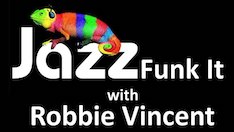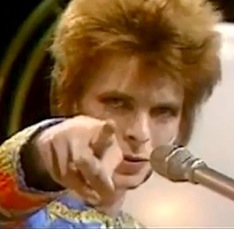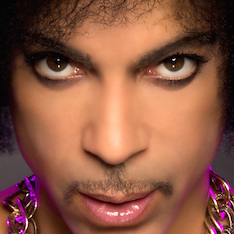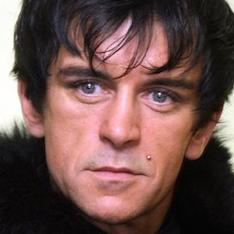◼ LAST NIGHT AT A LONDON CINEMA I saw the most exciting live pop concert since the same band played live in the Swinging Sixties. Ron Howard’s new Beatles documentary, Eight Days A Week about the touring years 1963-66, is a sensational feast of long-lost performance footage that confronts us with the Fab Four’s raw onstage energy and pounding tempo – the audio as gorgeously restored as the images. This two-hour celebration of Beatle genius goes behind the clichés of hysteria to give us Access All Areas. It delivers one revelation after another, from Paul’s “Oh-my-God” moment when Ringo joined the band, to the jaw-dropping recording of a top-ten single in 90 minutes of studio time, to their 1964 triumph for civil rights when the band refused to tour in the US until audience segregation was abandoned at their venues.
New interviews from Ringo Starr and Paul McCartney keep dropping gems of insight about this the most commercially successful group in pop history, while vintage footage does as much justice to lippy John Lennon and “quiet” George Harrison who are no longer with us.
Throughout this joyous moptops-into-men odyssey we’re wide-eyed at the sheer cheek of these multimedia superstars, aged between 19 and 22, who created their own interview style by pinging back witty ad-libs to questions from the world’s media. The downside was mass hysteria from teenaged babyboom fans laying siege to hotels and airports where they repeatedly overwhelmed police and security on an often scarifying scale.
Beatle albums sat at No 1 in the charts for 20 to 30 weeks at a time – more No 1 albums than any other musical act. Their 20 No 1 hit singles on the Billboard Hot 100 chart remain unchallenged.

Ron Howard with Paul and Ringo this week: “I love this photo that was taken yesterday at Abbey Road Studios in historic Studio 2 while we were promoting The Beatles: Eight Days a Week”
Everything The Beatles did was without precedent. Among their innovations they launched arena rock and at Shea Stadium Howard’s doc ensures that we hear George’s guitar chords above the screaming audience of 55,000 fans. As a shock reminder of Sixties technology, Vox had built three new amps for the Beatles, each souped up to 100 watts (!!!) specially for touring America, their output being relayed via microphones to feed the stadium’s tinny loudspeaker system!!!
It is a breath-taking source of inspiration to know that during The Beatles’ far from meteoric early years, this Liverpudlian band of brothers had played at least 456 live gigs before signing their recording contract with EMI. Yes, 456 !!! With that amount of practice, it should be no surprise to find that their legacy amounts to 237 original compositions – songs which most people on the planet can hum, while the most radical among them personify the Sixties counterculture. As the best-selling band in history, the Fabs revolutionised all of music for ever.
Howard’s previous reality epics include the wonderful Apollo 13 and the gripping joust, Frost/Nixon. This week he told The Guardian: “I began to think of the Beatles story as like Das Boot: they’re in it together, they have each other, they know what their objective is, but, y’know, it’s a dangerous world out there.”
WHAT THE PRESS ARE SAYING
➢ Ron Howard trashes the idea that there’s nothing new to say about the Beatles – The Guardian:
“ This is about the Beatles as live phenomenon, and the fact that their music was all the more remarkable because it had to be heard above the scream – that ambient sound of sex, excitement and modernity, mixed in with a thin chirrup of press envy. The scream was an important part of it. . . an almost unbroken four-year, semi-improvised multimedia performance for which there was no pre-existing template – not simply the music but the giant public spectacle and public scrutiny. ”
➢ 10 Things we learned from Eight Days a Week
– Rolling Stone:
“ In February 1964, the band and their entourage occupied nearly the entire 12th floor of the Plaza NYC, including the 10-room presidential suite. But despite the space, the four friends retired to smaller quarters. “The four of us ended up in the bathroom just to get a break from the incredible pressure,” Starr says. ”
➢ “We were force-grown, like rhubarb,” says John Lennon
– Daily Telegraph:
“ The film shrewdly draws a line between the Beatles’ mischievous sense of humour and their long-time producer George Martin’s earlier life recording alternative comedy. Martin had worked with the Goons, an enormous influence on the band’s growing lyrical eccentricity in that period, as well as their off-the-cuff ribbing of strait-laced reporters. ”
REMASTERED UK FOOTAGE, MANCHESTER 1963
Previously at Shapers of the 80s:
➢ No wonder The Beatles changed the shape of music after 456 sessions practising in public
➢ 1963, With The Beatles the day Kennedy was shot: “The second house was distinctly more subdued”
➢ 1966, More popular than Jesus: the fascinating Lennon interview in full





















